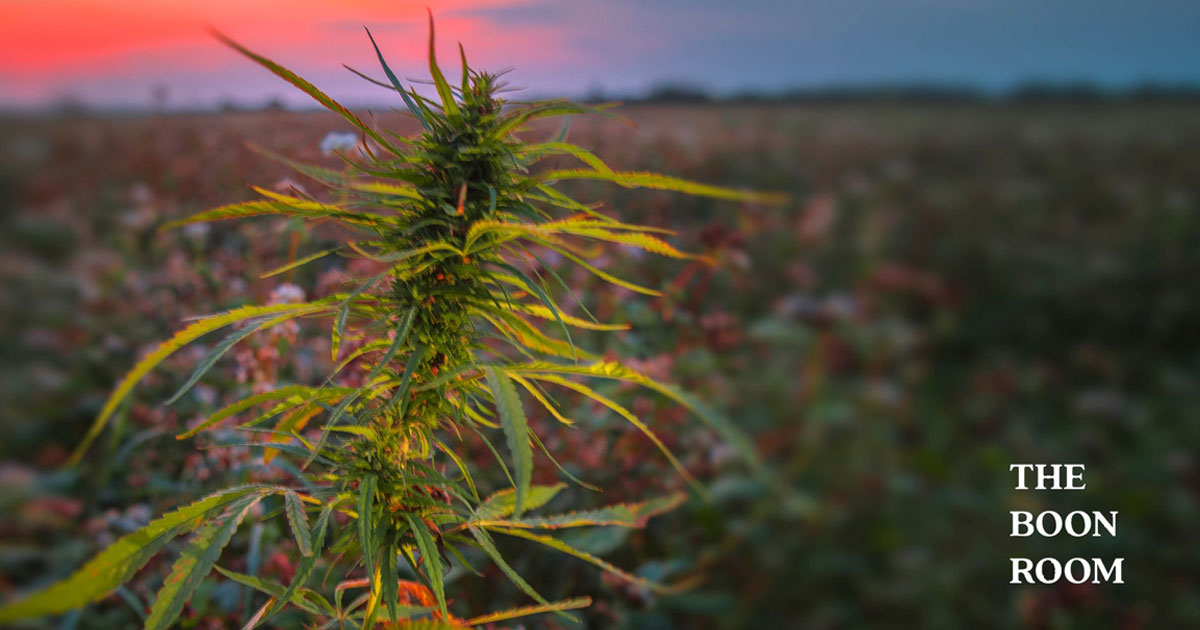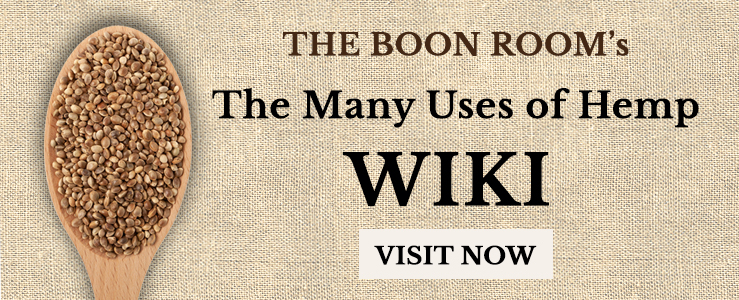When you hear the words “industrial hemp,” or even just “hemp” itself, what do you think of? You might think of anything from marijuana to CBD oil, or the hemp used in various lotions, makeup products, and hair care products. Perhaps you have a few questions. Is industrial hemp illegal? Is industrial hemp the same as CBD? Is there even a difference between hemp and industrial hemp?
Unfortunately, as you can see there’s a lot of undeserved controversy around the subject of cannabis in general, and hemp is often swept up into the mix. We’ll provide all the information about industrial hemp you need to determine whether you’d like to incorporate the plant into your business. We’ll consider hemp’s general uses, it’s legality and the benefits of using hemp to boost your business. Then, you can explore whether hemp can be beneficial for you and your company in the long run and make the decision to adopt this plant into your production practices.
What Is Industrial Hemp?
Industrial hemp is known as a “sister plant” to marijuana. Put simply, it is a strain of cannabis that resembles and has similar properties to marijuana, and has some similarities to specific marijuana cultivars However, while they are strains of the same plant, Cannabis sativa L, they do not contain the same active compounds.
In this way, marijuana and hemp are the same plant used for very different purposes. With high levels of psychoactive THC, marijuana is used for intoxicating and therapeutic applications. However, industrial hemp is cultivated to have close to zero THC and is a multi-use crop. In fact, industrial hemp has a variety of uses, from long-lasting batteries to clothing fibers.
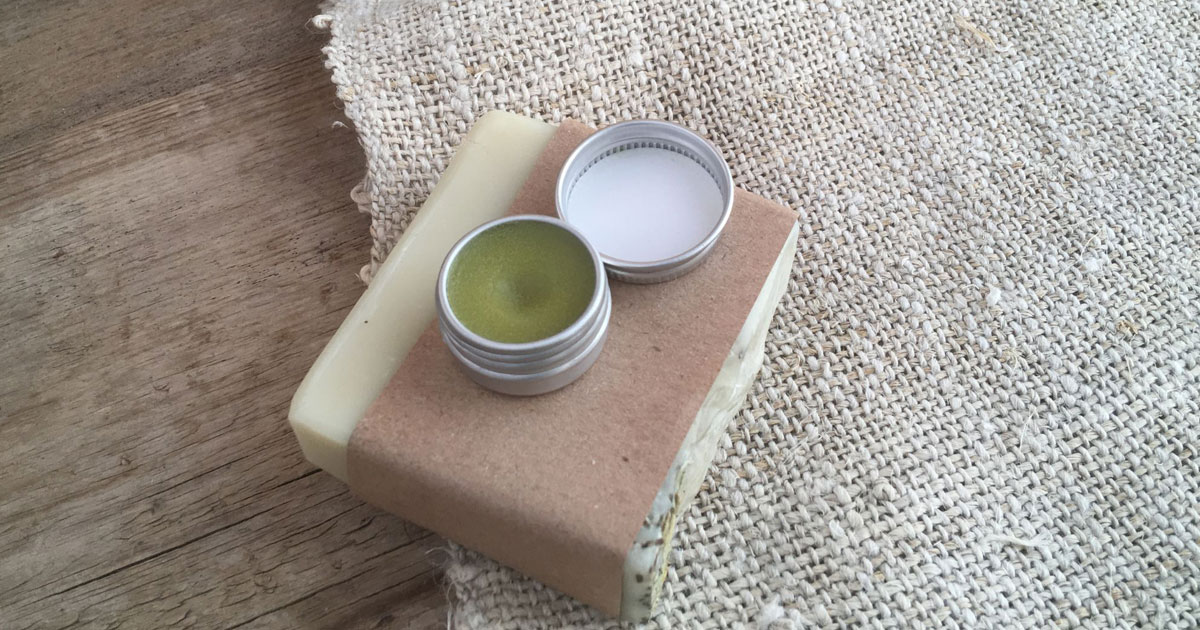
For starters, did you know that “industrial hemp” and “hemp” are completely interchangeable terms? A bottle of hemp lotion in the store is made with the same hemp used in other industries and products around the world. However, there are a few specific details that are important to note. The plant family hemp is derived from, Cannabaceae, naturally occurs in three major species, Cannabis sativa L., Cannabis ruderalis, and Cannabis indica. Cannabis sativa L is the species cultivated for industrial hemp production, though it is sometimes used interchangeably with Cannabis indica.
If you know anything about marijuana, you might be starting to get confused. Terms like indica and sativa are commonly associated with the various strains of marijuana. Many people may assume that marijuana and hemp are the same things. Botanically speaking, they are the same plant species, but in different forms.
The determining factor that distinguishes industrial hemp from marijuana is the amount of psychoactive tetrahydrocannabinol, known more commonly as THC, that occurs in that particular strain of Cannabis sativa. According to federal regulations, there must be under a 0.3% concentration of THC in industrial hemp. In some places, this figure is as low as 0.2%. While the plant still has a soothing effect, it isn’t cultivated for drug-related purposes, due to having a much lower THC count than its more controversial counterpart.
The term marijuana, then, is used specifically when referring to THC-containing Cannabis sativa L plants that can be used to achieve psychoactive effects. Industrial hemp is cultivated for a variety of uses. The seeds and fibers are especially valuable for their many industrial purposes, particularly in the textile industry. It’s also used to make cannabidiol, or CBD, and various skincare and beauty products.
How Has Industrial Hemp Been Used?
Industrial hemp is widely produced yet inexpensive, and hemp agriculture has been around for centuries, even seeing use in the paper used for original Bibles. Nowadays, this strong and versatile fiber is grown primarily in Russia and China, but also sees major production in several European, Asian, and South American countries. The industry is still growing today, all over the world. As the crop and its production date back several centuries, there’s a lot of historical usage to explore.
Believed to have been cultivated originally in ancient Eurasia, industrial hemp was mainly used as any other plant fiber. Back then, fibrous material would have been used to create everything from hunting and fighting tools like spears and bows, to being used for building homes and crafting necessary supplies, like baskets and traps. Industrial hemp was no exception to this. Cannabis, in general, was widely used, as it could be used for food, medicine, and religious rituals, as well. As time went on, it also saw use in everything from paper manufacturing to ropes and sails for boats.
There’s also evidence of industrial hemp being used by the Lakota people in South Dakota from as early as 8000 B.C. As a result, the descendants of the Lakota tribe still believe in using industrial hemp for both cultural and economic reasons, even against government aggression toward the misunderstood plant. As late as 2001, the Lakota tribe was still growing hemp, which was intended to be used as a construction material.
Other countries in which hemp has been historically used include Croatia, where it’s been used since the mid-16th century for taxes, rope manufacturing, and as a source of food for both humans and animals. Also, China, where it has been cultivated for as long as civilization has existed and mainly used as a fiber crop, with a lot of the use still being traditional to this day. It’s clear that industrial hemp has been grown and cultivated all over the world, with different cultures finding different yet similar uses for it.
Benefits of Using Industrial Hemp
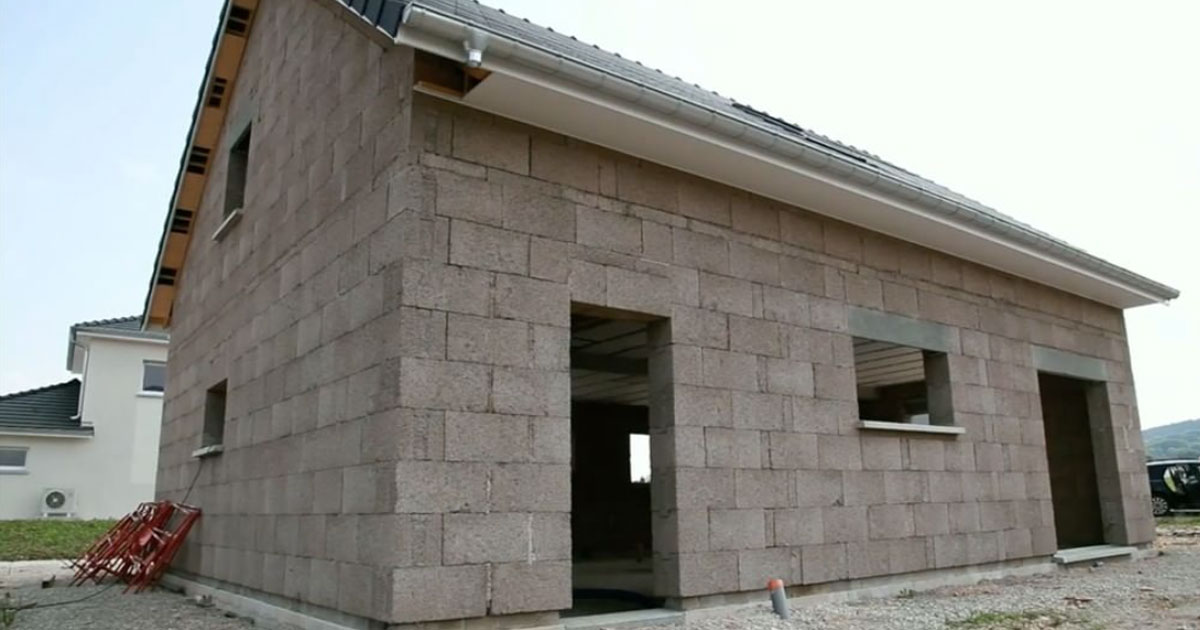
Caption: Load-bearing hempcrete wall systems are getting more attention as lumber costs for frame walls has spiked. Photo courtesy of HempBLOCKUSA
Nowadays, the applications for industrial hemp have grown broader as people experiment with the crop and reintroduce it into modern culture. It’s becoming used worldwide all over again, and for a variety of uses. From the traditional clothing fibers and paper manufacturing to paint and biofuel, the hemp industry grows as human creativity and curiosity grows. It’s even used to help fix polluted soils and to create biodegradable plastic. Many uses today are, as a result, focused on using industrial hemp to help the planet and create plant-based alternatives to regular, synthetic products.
The textile industry, in particular, is a major source of pollution, and industrial hemp remains a good choice for an environmentally-friendly option. It has a smaller ecological footprint than cotton does, and has proven to be useful as a clothing fiber, to the point where cultivating hemp specifically for the sake of textiles may be economically viable and competitive.
Hemp can also be used to create building materials, such as concrete, which can reduce energy consumption and indoor humidity levels more than cellular concrete can. There is also potential for hemp fibers to be used as sound absorbers or insulators, and this leads to them being of use in making musical instruments for the sake of vibration dampening.
The benefits of using industrial hemp are, thus, primarily based on cost and environmental impact. Businesses looking to remain competitive while using sustainable and eco-friendly materials can and do consider using industrial hemp as a replacement for other materials.
While a lot of the purposes of hemp are still controversial and under investigation, it is understood that using natural fibers and crops that leave less of a footprint is better when discussing the environment and non-pollutants. Whether it’s biodegradable plastic, environmentally-safer clothing production, or even eco-friendly car manufacturing, industrial hemp proves to be both versatile and economically viable for businesses all around the world. As such, companies can get use out of industrial hemp if environmentally-safe products are needed, or if they’re manufacturing clothing, paper, or construction materials in general.
Industrial Hemp for CBD
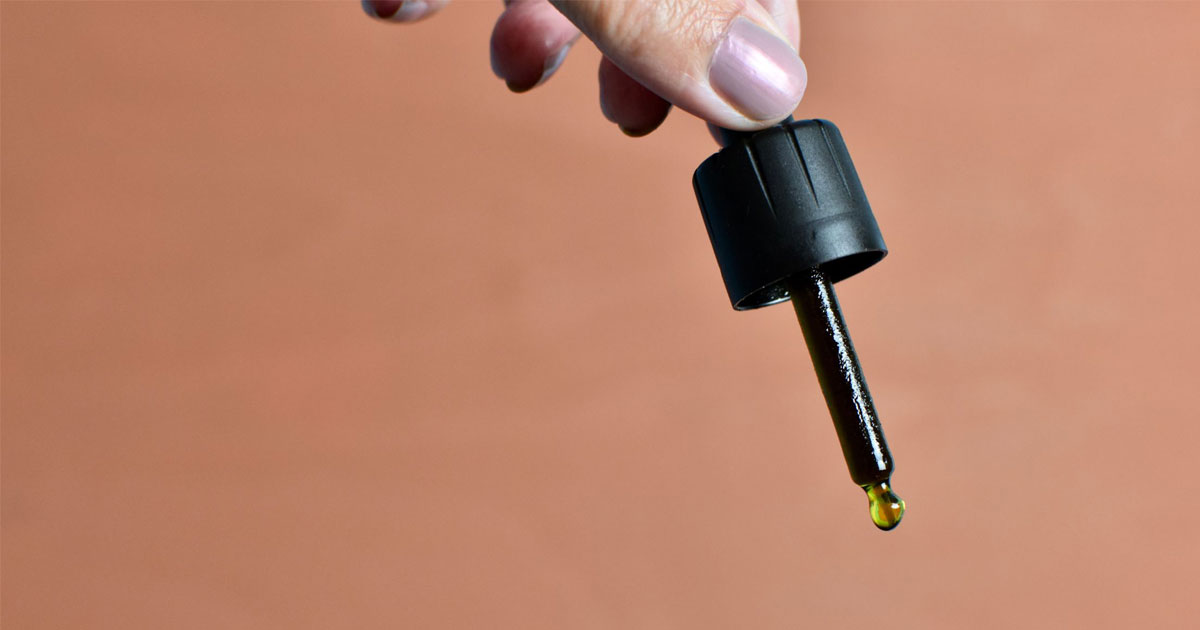
There is another use for hemp that can’t be overlooked—industrial hemp plants can be used to produce CBD oil. However, caring for plants grown for CBD purposes is often much more labor-intensive than the ones grown for their seeds or fibers. CBD-heavy strains are often considered to be harder to raise than even tobacco, a notoriously difficult plant species. Factors such as the intensity of the available sunlight and the exact strain of the plant can impact how much CBD oil is produced.
Extraction of the CBD compound is also harder to achieve than retrieving fibers or seeds for other hemp products. This is because the plant needs to be altered in some way to retrieve the oil. Common methods include putting the plant in a chamber full of pressurized carbon dioxide, using solvents and extraction equipment, or even heating the plants in an oven while they’re covered in cooking oil. After extraction, however, CBD oil can be a lucrative product and is thus one of the leading worldwide uses of hemp. The benefits outweigh the risks, but care does need to be taken to ensure the extraction process is completed correctly and economically.
Why Isn’t Everyone Using Hemp?
If industrial hemp is so useful, both for the economy and for the environment, why doesn’t every business make the switch? Are there any risks and concerns you should know about before converting your company completely? If so, what are they?
Many people promote hemp as a lucrative, multi-use crop and will seek ways to use it in any scenario or industry. It is legal, having been officially legalized in its industrial form by the 2018 Farm Bill. Before 2018, only certain organizations, known as “pilot programs”, were allowed to grow hemp for the purposes of research, though industrial hemp was technically allowed before that date. Now, it’s available for much wider usage and research, without nearly as many restrictions on who can cultivate it and for what purpose. Still, some people continue to be put off by its similarities to marijuana, as well as the still-incomplete science behind the effects of hemp and CBD. For some, as a variety of cannabis, industrial hemp is still unfairly considered controversial.
Put simply, there’s no official, worldwide consensus regarding the utility and value of hemp, and turning it into a common industry crop has been an uphill battle. The tide is beginning to turn in favor of using industrial hemp, and it’s been reintroduced to several countries that used to produce it, but there’s still plenty of discourse surrounding the crop.
Hemp as Therapy
For example, more and more people are turning to CBD and hemp products as medicines. There has been a struggle between extract and oil producers and the FDA when it comes to how to market medical hemp products. Consider the legal battle between the Administration and the Stanley Brothers, who marketed their products as cure-all drugs.
Still, there is evidence of CBD and hemp being useful for health purposes. Specifically, the drug Epidiolex®, which is made of pure CBD, and has been approved as a treatment for two rare, yet severe, types of epilepsy. There is also a litany of scientific journals and research articles into the potential health benefits of CBD, and many use the oil to treat issues such as joint pain, anxiety and depression, and insomnia. Research into these uses remains ongoing, but the studies show promise. However, the lack of FDA approval and concerns about contamination, false advertising, and monetary benefit for certain disreputable companies remains a sticking point for some people.
Hemp as a Natural Fiber
Meanwhile, natural fibers do have some disadvantages compared to synthetic fibers, which may turn people away from using them. They don’t resist microorganisms as easily, for example, and have low thermal stability. Natural fibers are also affected easily by where they’re grown, what temperature it is, and how they’re harvested.
Natural fibers absorb more water and other liquids, as well, which can cause the fibers to swell or debond. Industrial hemp isn’t an exception to these concerns, which may mean that synthetic fibers remain more desirable to some companies and in some industries as a whole. Care needs to be taken to ensure that the hemp fibers are grown under ideal conditions, and are used for the industries that suit it.
Of course, we believe the benefits still outweigh many of the risks. There’s a high demand, a lot of potential for great and Earth-saving uses, and a need for more sustainable crops, which industrial hemp indisputably qualifies as. Whether you decide to incorporate industrial hemp into your business or not is a judgment call, but the industry is growing by the day, and it may be on its way to becoming a staple, multi-use industrial crop used by millions, regardless of the potential risks involved or the controversies surrounding cannabis use.
The Future of Industrial Hemp

From ancient history to modern day scientific and industrial breakthroughs, hemp is used in a variety of ways and with a variety of purposes. Textile industries get use out of the natural fiber as a cotton alternative, musical instrument producers can use it for anti-vibratory properties, and even car manufacturers can use it as an environmentally-safe addition to metal and glass.
It works as a biofuel, a biodegradable plastic, and in some cases, even as a medicine for epilepsy. The food benefits cannot be ignored either, as both human food and pet food can be made from hemp or with CBD oil incorporated into the recipe. Due to the lack of psychoactive properties, hemp can be treated as a valuable multi-use crop with industrial benefits.
Sources
- Sawler, J., Stout, J. M., Gardner, K. M., Hudson, D., Vidmar, J., Butler, L., Page, J. E., & Myles, S. (2015). The genetic structure of marijuana and Hemp. PLOS ONE, 10(8). https://doi.org/10.1371/journal.pone.0133292
- Manaia, J. P., Manaia, A. T., & Rodriges, L. (2019). Industrial hemp fibers: An overview. Fibers, 7(12), 106. https://doi.org/10.3390/fib7120106
- Lash, R. (2002). Industrial hemp: The crop for the seventh generation. American Indian Law Review, 27(1), 313. https://doi.org/10.2307/20070692
- Amaducci, S., Scordia, D., Liu, F. H., Zhang, Q., Guo, H., Testa, G., & Cosentino, S. L. (2015). Key cultivation techniques for hemp in Europe and China. Industrial Crops and Products, 68, 2–16. https://doi.org/10.1016/j.indcrop.2014.06.041
- Rehman, M., Fahad, S., Du, G. et al. Evaluation of hemp (Cannabis sativa L.) as an industrial crop: a review. Environ Sci Pollut Res 28, 52832–52843 (2021). https://doi.org/10.1007/s11356-021-16264-5
- Duque Schumacher, A. G., Pequito, S., & Pazour, J. (2020). Industrial hemp fiber: A sustainable and economical alternative to Cotton. Journal of Cleaner Production, 268, 122180. https://doi.org/10.1016/j.jclepro.2020.122180
- Hilderbrand R. L. (2018). Hemp & Cannabidiol: What is a Medicine?. Missouri medicine, 115(4), 306–309. Retrieved May 15, 2022, from https://www.ncbi.nlm.nih.gov/pmc/articles/PMC6140266/

I’m a kid at heart disguised as a cannabis researcher and business owner. I’ve always enjoyed providing insight in the form of reviews (anime, video games, etc.) So, when the cannabis industry took off, it sparked my interest in researching, reviewing, and chronicling all things within. When I’m not researching, I’m spending time with my family, riding my motorcycle, and finding new entrepreneurial pursuits.
